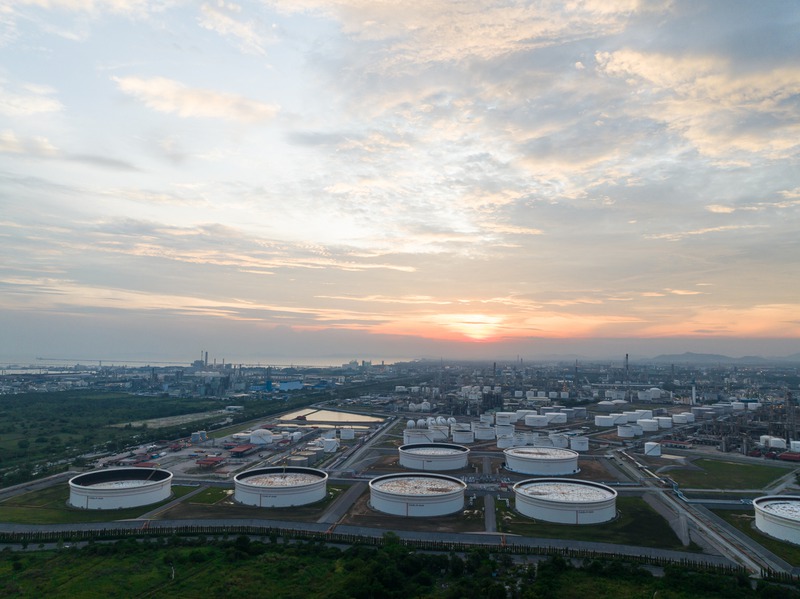Liquefied Natural Gas (LNG) is a form of natural gas that has been cooled to a liquid state, making it more efficient for storage and transportation. The production of LNG is a complex process involving several critical stages. From exploration to final distribution, each step ensures that natural gas is safely and efficiently converted into its more versatile liquid form. Here, we outline the key stages of LNG production, providing a comprehensive understanding of the journey from extraction to end-user.
Exploration and Extraction
The journey of LNG starts with geologists identifying potential natural gas reserves. These reserves are often located in remote areas, either onshore or offshore. Drilling rigs are then set up to extract natural gas from beneath the earth’s surface. This first step is crucial as it sets the foundation for the entire LNG production process.
Treatment and Purification
Once extracted, the natural gas undergoes treatment to remove impurities such as water, sand, and other compounds. The purification process ensures that only methane, the primary component of natural gas, along with some ethane, propane, and butane, is left. The aim is to prevent any equipment damage in downstream processes and to meet the specifications required for liquefaction.
Liquefaction
Liquefaction is where natural gas is transformed into LNG by cooling it to approximately -162°C (-260°F). This temperature reduction shrinks the volume of the gas by about 600 times, making it easier and more cost-effective to store and transport over long distances. The liquefaction process typically occurs in large plants located close to export terminals.
Storage and Loading
Post-liquefaction, the LNG is stored in insulated tanks designed to keep it cold and in its liquid state. These storage facilities are critical for managing the supply chain and ensuring there is enough product ready for shipment when demand arises.
LNG is then loaded onto specially designed ships with insulated tanks capable of handling the low temperatures required to maintain LNG in its liquid state. This is a delicate operation, as maintaining the correct temperature is paramount to ensure safety and prevent gasification.
Transportation
The transportation stage is about moving LNG across the oceans to different markets. LNG carriers are high-tech vessels specifically designed for this purpose. They are equipped with sophisticated insulation systems that minimize the amount of LNG that evaporates during the journey.
Regasification
Upon arrival at its destination, LNG is unloaded into regasification plants. Here, regasification takes place, whereby LNG is carefully heated and converted back into a gaseous state. Regasification plants are typically located close to areas with a high demand for natural gas.
Power Generation & Industrial Utilization
Restored to its gaseous form, natural gas is ready to be distributed through pipelines for residential, commercial, and industrial use. One of the primary uses of natural gas is power generation due to its relatively clean combustion compared to other fossil fuels.
Transportation of LNG is directly linked to various industries such as semiconductor production, where the consistent and reliable energy supply is critical to maintain precision and efficiency
Distribution
Once regasified, the natural gas is sent into distribution networks where it reaches consumers. This process involves an extensive network of pipelines that transport the natural gas to various sectors, including domestic, commercial, and industrial customers.
Final Delivery
The final stage involves the end-user applications of natural gas, where it is used for heating, cooking, and electricity generation, among other uses. The versatility of natural gas makes it an integral part of daily life for millions of people.
Environmental Considerations
Throughout the stages of LNG production, environmental considerations are paramount. Efforts are made to minimize the environmental footprint, including reducing greenhouse gas emissions, managing water use, and preserving local ecosystems.
Safety and Regulation
Safety is a critical aspect of LNG production. Rigorous standards and protocols are in place to ensure the safe handling and transport of LNG. Additionally, there is a strict regulatory framework that oversees every stage to safeguard workers, communities, and the environment.
Diversified foam products are another example of an industry that may benefit from LNG as a clean energy source, showcasing the versatility and extensive reach of LNG applications.
Summary of LNG Production Stages
LNG production involves multiple carefully controlled stages:
-
Exploration and extraction of natural gas.
-
Treatment and purification to remove impurities.
-
Liquefaction by cooling the gas.
-
Storage in specialized tanks.
-
Loading onto LNG carriers for transportation.
After these stages:
-
The transportation phase moves LNG to international markets.
-
Regasification transforms LNG back to gas.
-
Distribution through pipelines leading to various end uses.
LNG is vital for global energy supply, contributing to energy security and allowing countries without direct access to natural gas resources to benefit from this cleaner-burning fuel. . Similarly, industries like Diversified CPC International demonstrate the critical role LNG plays in providing energy to sectors ranging from automotive to aerosol propellants, illustrating its importance in the modern industrial landscape.
To End
The stages of LNG production are integral to delivering this vital energy resource around the globe. From the initial extraction to the final delivery, each phase is meticulously managed to ensure efficiency, safety, and sustainability. As the demand for cleaner fuel alternatives grows, understanding the LNG production process becomes increasingly relevant. The production of LNG is a testament to human ingenuity in maximizing energy resources while tackling the challenges of a modern energy landscape.





